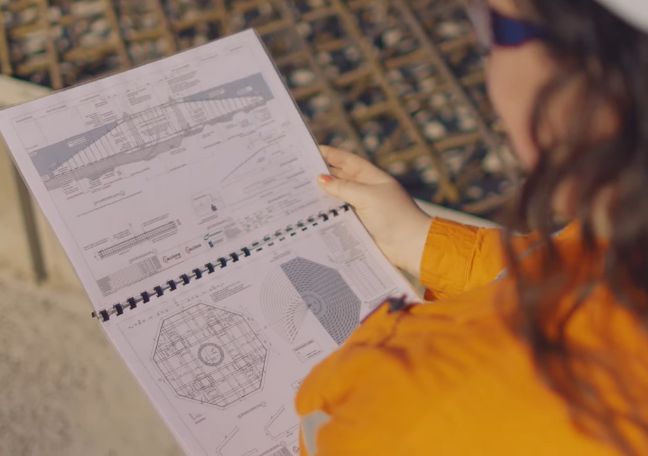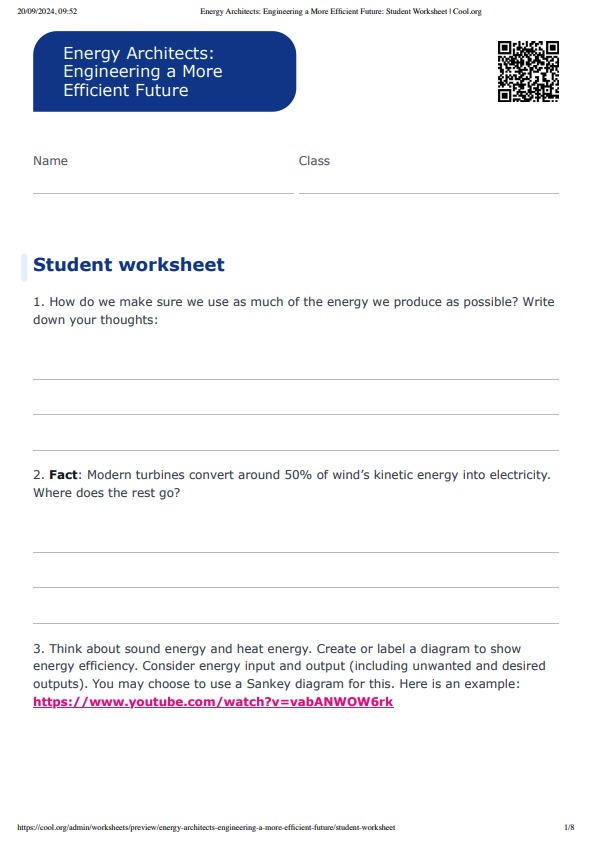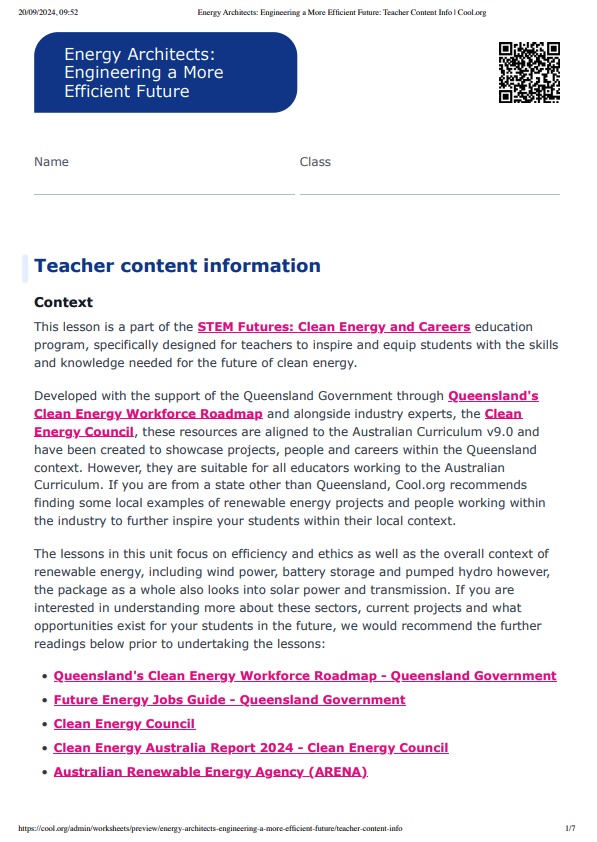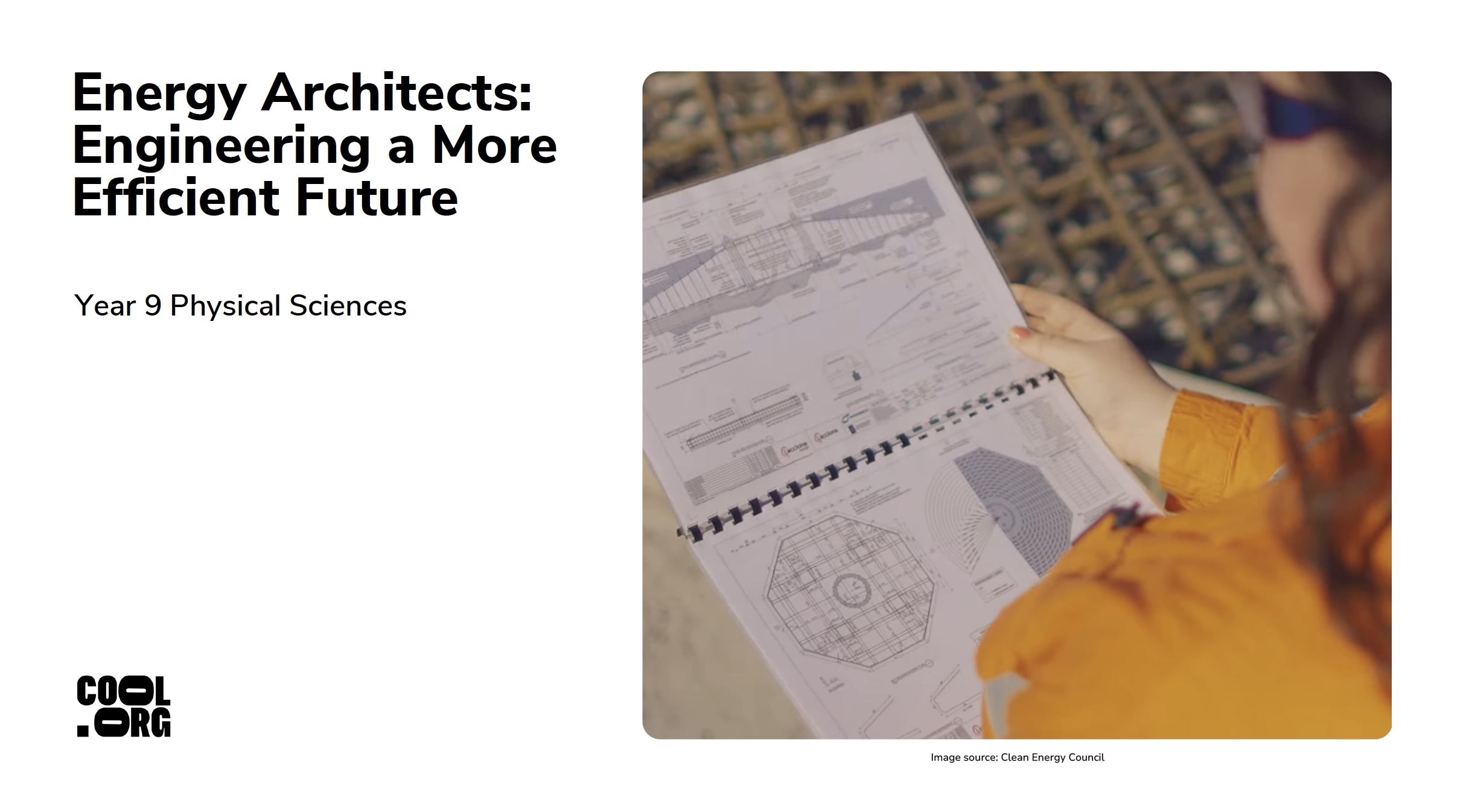Lesson summary
In this lesson, students will apply the law of conservation of energy to analyse system efficiency in terms of energy inputs, outputs, transfers and transformations by investigating case studies of renewable energy projects in Queensland. They will explore how scientists and engineers enhance the efficiency of these systems and engage with real-world examples and career pathways in the energy sector.
Learning intentions:
Students will...
- understand and apply the law of conservation of energy to analyse the efficiency of energy systems, including the roles of scientists and engineers in making renewable energy infrastructure more efficient.
Success criteria:
Students can...
- describe how energy inputs, outputs transfers, and transformations occur within an energy system
- analyse the efficiency of renewable energy systems by applying the law of conservation of energy
- explain the development of an example of renewable energy infrastructure using a case study and a career example.
Lesson guides and printables
Curriculum links
Select your curriculum from the options below.
Lesson details
Skills
This lesson is designed to build students’ competencies in the following skills:
- collaboration
- communication
- creative thinking
- critical thinking
- curiosity
- digital literacy
- problem-solving
- reflection
Curriculum Mapping
Australian Curriculum (v9.0) content description: Year 9, Physical Sciences
Students learn to:
- apply the law of conservation of energy to analyse system efficiency in terms of energy inputs, outputs, transfers and transformations (AC9S9U05)
- investigate how advances in technologies enable advances in science and how science has contributed to developments in technologies and engineering (AC9S9H02).
Relevant parts of Year 9 achievement standards: Students can analyse energy conservation in simple systems and apply wave and particle models to describe energy transfer. They explain the role of publication and peer review in the development of scientific knowledge and explain the relationship between science, technologies and engineering.
NSW Syllabus outcomes:
- describes the effects of forces in everyday contexts (SC4-FOR-01)
- evaluates current and alternative energy use based on ethical and sustainability considerations (SC5-EGY-01).
General capabilities: Critical and Creative Thinking, Digital Literacy, Literacy, Personal and Social Capability
Cross-curriculum priority: Sustainability
Level of teacher scaffolding: Medium: facilitate class discussion, research, and group work.
UN Sustainable Development Goals
UN SDG 7: Ensure access to affordable, reliable, sustainable and modern energy for all.
- Target 7:1 By 2030, ensure universal access to affordable, reliable and modern energy services.
Resources Required
- Devices for research
- Internet access for research
- Markers, pens, and other drawing materials
- Poster paper or digital presentation tools (e.g., PowerPoint, Google Slides)
Additional Info
This lesson has been developed in partnership with the Queensland Government through Queensland's Clean Energy Workforce Roadmap. Cool.org would like to acknowledge and express our gratitude to the Clean Energy Council for the expertise and advice provided in creating these resources.
Related Professional Learning
STEM Professional Learning Pathway
Quick summary: Enhance your practice with Cool.org's STEM Professional Learning Pathway. This year-long plan is designed to build your skills and capabilities in teaching STEM, ultimately transforming you into a STEM Innovator. The pathway will prepare you to integrate STEM education effectively, adapt to technological advancements and inspire students to succeed in a rapidly evolving world.





Welcome back!
Don't have an account yet?
Log in with:
Create your free Cool.org account.
Many of our resources are free, with an option to upgrade to Cool+ for premium content.
Already have an account?
Sign up with:
By signing up you accept Cool.org's Terms and Conditions(Opens in new tab) and Privacy Policy(Opens in new tab).